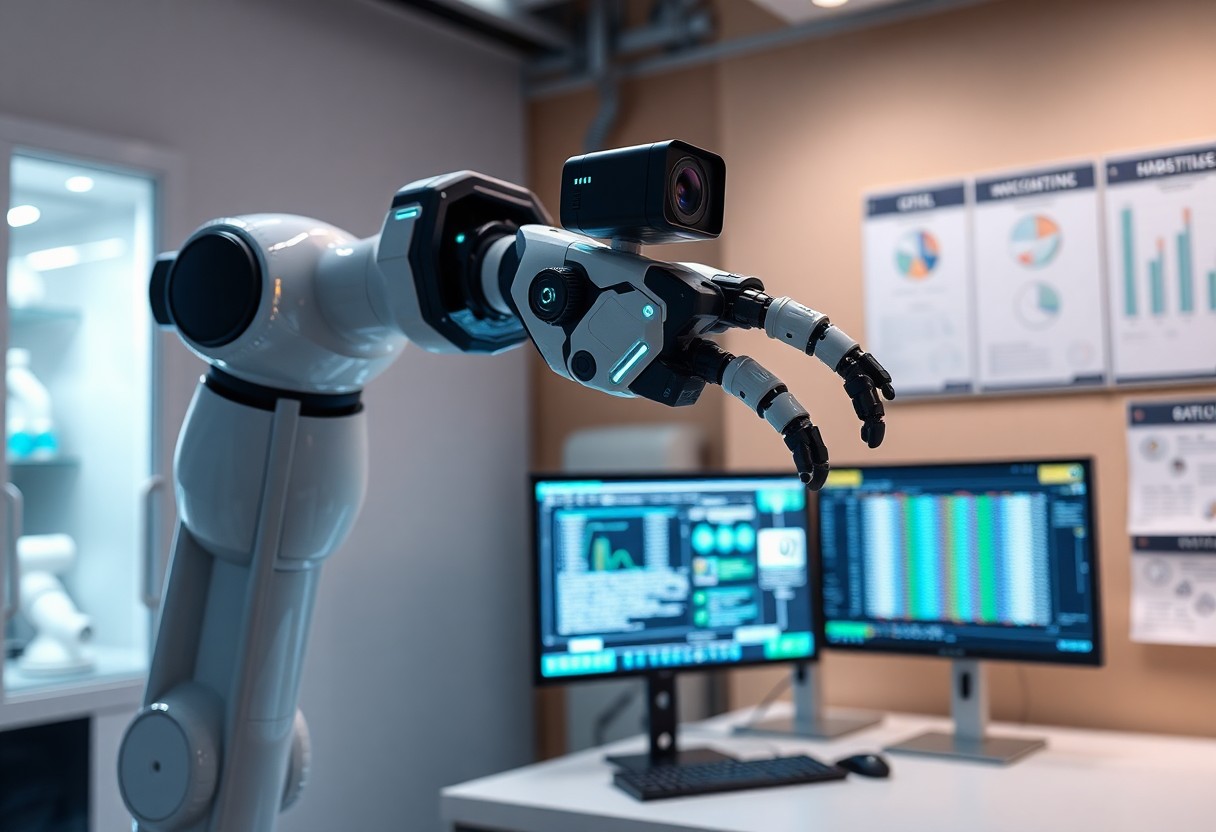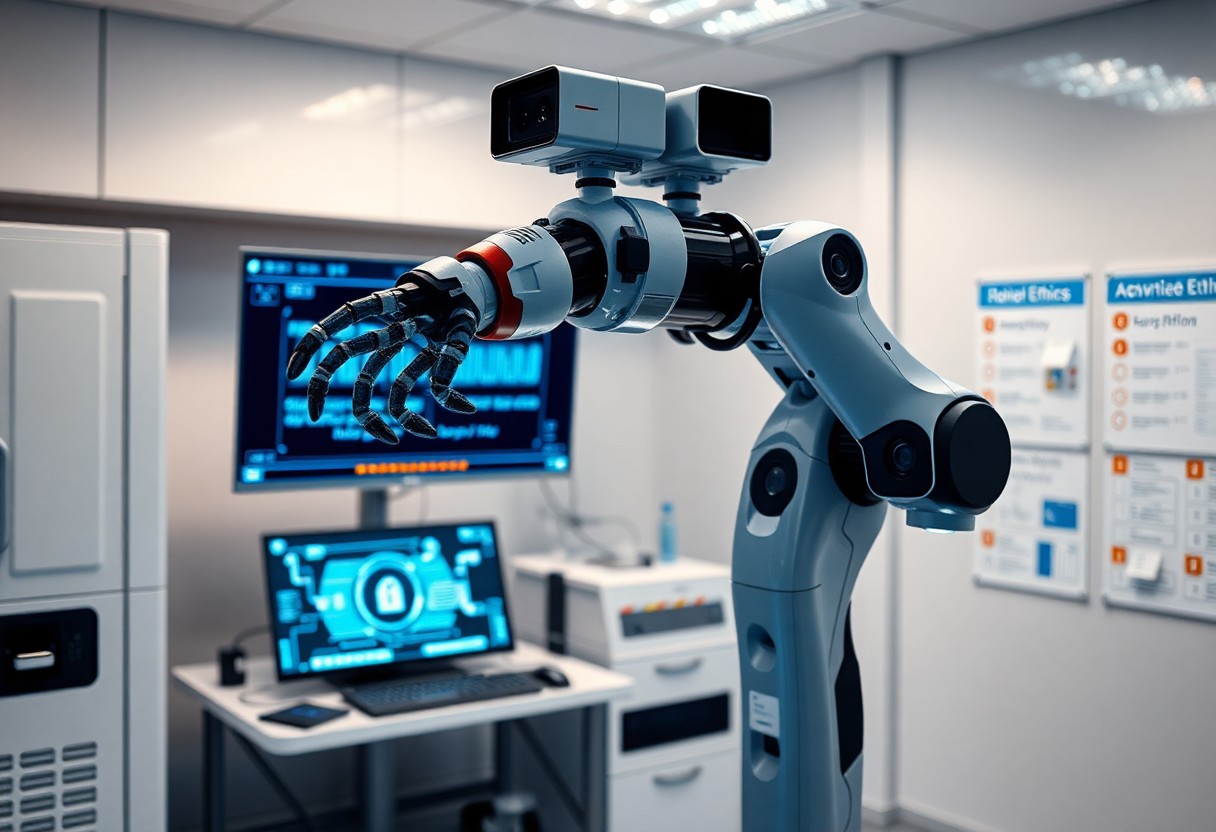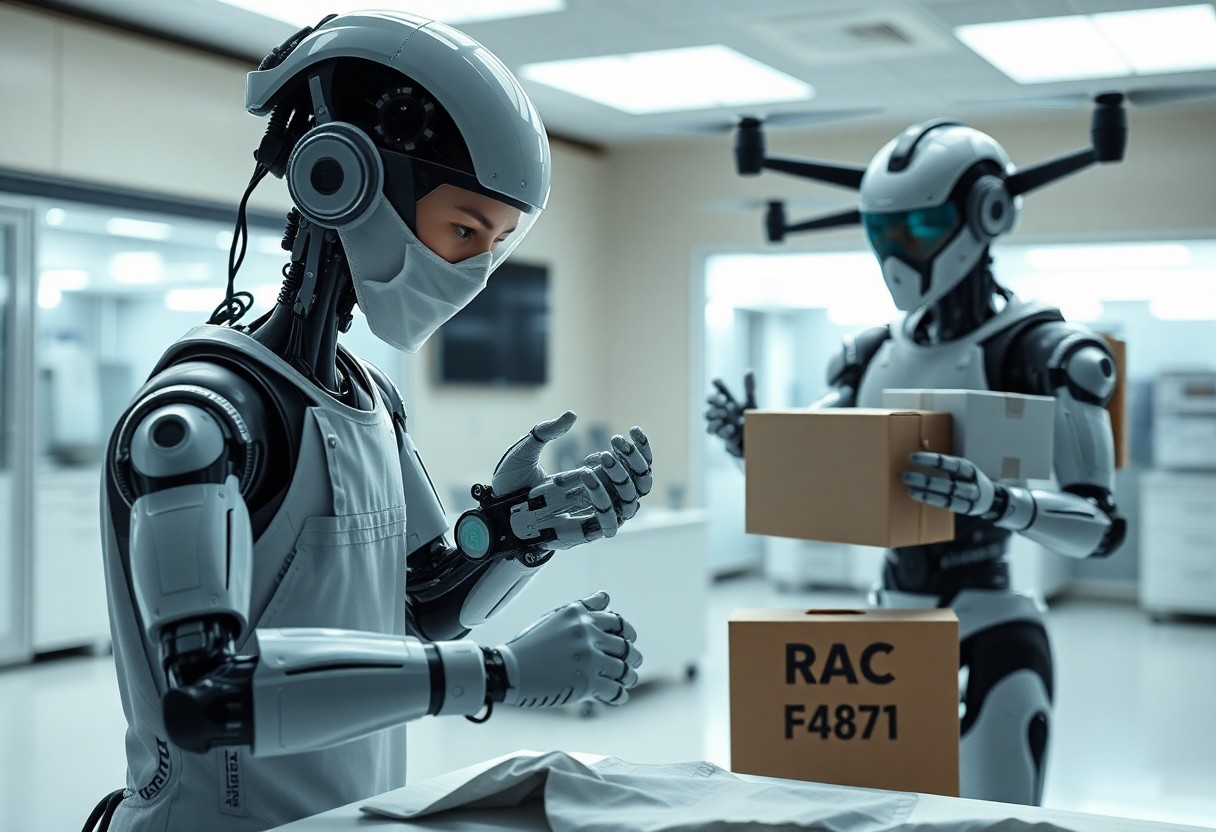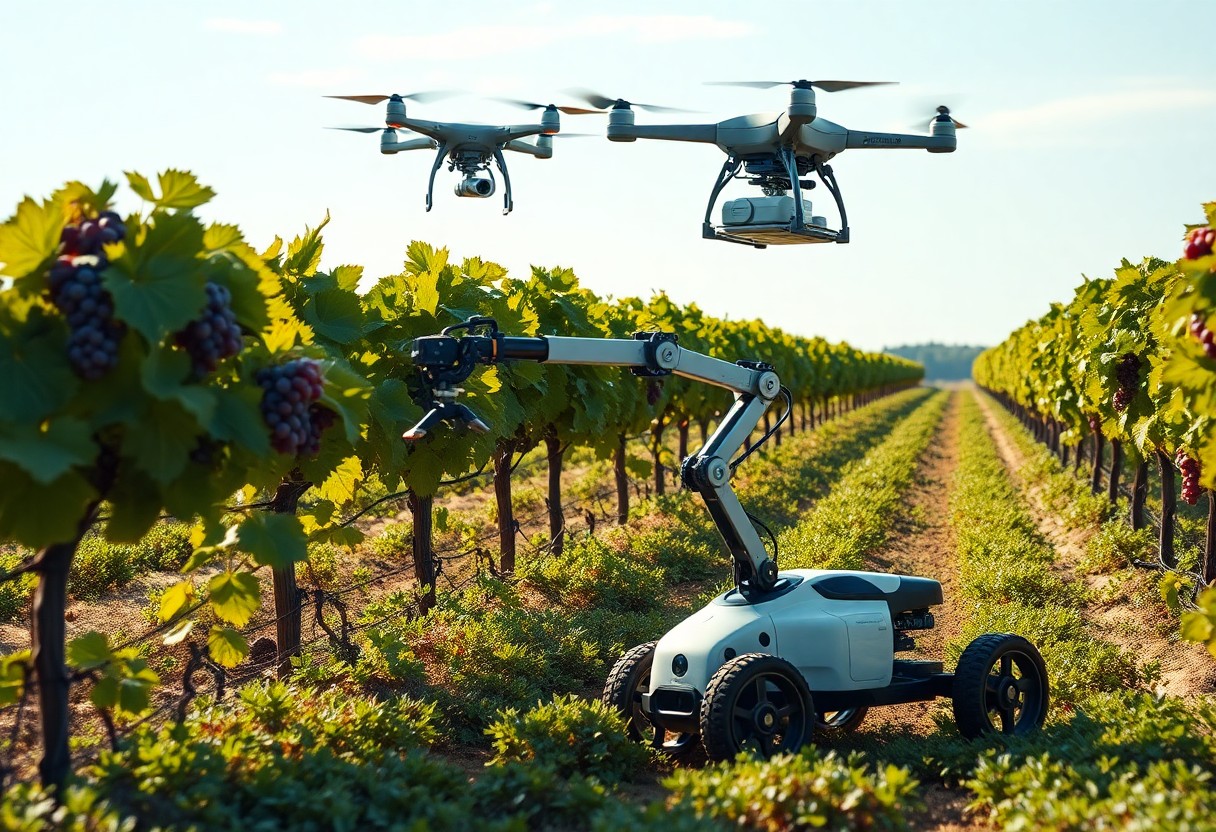Security in robotics is increasingly vital as technology integrates deeper into everyday life. As you explore the intersection of robotics and ethics, consider how data protection and security measures are important to safeguarding your personal information. Understanding the potential vulnerabilities and ethical implications can empower you to make informed decisions regarding robotic applications. This post will guide you through the fundamental aspects of data protection and the ethical considerations necessary to navigate this evolving landscape.
The Intersection of Robotics and Ethics
The convergence of robotics and ethics presents complex challenges and opportunities for society. As robots become more autonomous and integrated into human roles, you must consider ethical implications in their design and use. Issues such as accountability, transparency, and the impact on employment demand careful scrutiny. The ethical landscape influences not just the development of robotics but also their acceptance in various sectors, emphasizing the importance of aligning technological advancement with societal values.
Ethical Considerations in Robotic Design
Designing robots involves significant ethical considerations that directly affect user safety and societal norms. You face dilemmas like balancing innovation with potential risks, ensuring that the benefits of robotic technologies do not come at the cost of human rights or personal privacy. Ethical frameworks can guide you in creating robots that respect user autonomy and promote well-being, necessitating an inclusive approach to design that prioritizes human-centered values.
The Role of AI in Ethical Decision-Making
AI plays a pivotal role in enhancing the ethical decision-making capabilities of robots. You can program algorithms to evaluate complex scenarios and determine actions that adhere to ethical standards. Implementing frameworks for AI-driven decision-making allows you to integrate moral values into robotic operations, promoting trust and accountability in fully autonomous systems while addressing concerns about bias and fairness.
AI’s involvement in ethical decision-making extends beyond basic programming to sophisticated systems capable of assessing dynamic situations. For example, self-driving cars utilize AI to make instantaneous decisions regarding safety, analyzing real-time data while weighing human life and property considerations. Furthermore, the development of ethical guidelines for AI, such as the EU’s AI Act, ensures that these decisions align with societal values and legal standards. As you navigate these advancements, fostering transparency and public engagement will be vital to maintaining accountability in robotic applications.
Data Protection in Robotic Systems
In an era where robotics is increasingly integrated into everyday life, ensuring data protection within these systems is paramount. You must consider the vast amounts of personal and operational data that robotic systems collect, process, and store. This data can range from user preferences to sensitive information, making its safeguarding an necessary priority. Establishing strong data protection measures will not only enhance user trust but also mitigate risks associated with potential data breaches.
Importance of Data Privacy
Data privacy in robotic systems safeguards your personal information from unauthorized access and misuse. Protecting sensitive data helps maintain user trust, ensuring that individuals feel secure when interacting with robotic technologies. Robust data privacy practices can also prevent potential reputational damage and financial loss for companies deploying these systems, making it a fundamental aspect of ethical robotics.
Regulatory Frameworks Governing Data Protection
Various regulatory frameworks govern data protection, shaping how robotic systems must operate to ensure compliance. You should be aware of regulations like the GDPR in Europe and the CCPA in California, which outline the fundamental rights individuals have regarding their personal data. Adhering to these regulations can protect you from legal repercussions and reinforce the commitment companies have towards data privacy.
The General Data Protection Regulation (GDPR), implemented in 2018, mandates strict guidelines on data collection, processing, and storage. For instance, organizations must obtain explicit consent from individuals before collecting their data, and they are required to provide transparent information on how their data will be used. Similarly, the California Consumer Privacy Act (CCPA) grants California residents specific rights, such as the right to know what personal data is being collected and sold. Compliance with such regulatory frameworks not only ensures the protection of your data but also promotes ethical standards in the deployment of robotic systems, fostering a culture of accountability and respect for personal privacy. Adapting to these regulations is necessary for any business looking to integrate robotics into their services or products effectively.

Security Challenges in Robotics
Robots face numerous security challenges that can compromise their operations and data. As they increasingly rely on connected systems and networks, vulnerabilities expose them to potential cyber-attacks. The integration of AI and machine learning can unintentionally invite risks, especially with insufficient security protocols, leading to unauthorized access or manipulation of robotic behaviors.
Vulnerabilities in Robotic Systems
Robotic systems can harbor various vulnerabilities due to outdated software, weak encryption, and poorly implemented authentication measures. For instance, a lack of robust firewalls can leave them open to external attacks, while hardcoded credentials can be exploited easily. Case studies have shown that poorly secured robots in manufacturing settings have led to significant data breaches and operational disruptions.
Strategies for Enhancing Security
Enhancing security in robotics requires a multi-faceted approach. Implementing regular software updates, employing strong encryption methods, and utilizing advanced authentication techniques can significantly mitigate vulnerability. You can also incorporate AI-driven threat detection systems to identify and respond to potential breaches in real-time, improving overall safety and reliability.
In addition to strong encryption and regular updates, conducting routine security audits helps identify potential loopholes before they can be exploited. Training personnel on cybersecurity best practices is equally vital, as human error often contributes to security breaches. Collaborating with cybersecurity experts can provide tailored solutions specific to your robotic applications, ensuring a proactive stance against evolving threats. Integrating a layered security approach that encompasses software, hardware, and human elements offers comprehensive protection and boosts the resilience of robotic systems against attacks.
The Balance Between Innovation and Ethical Responsibility
Innovation in robotics often pushes the boundaries of technology, leading to significant advancements that benefit society. However, the ethical implications of these developments require careful consideration to ensure they align with public values and social norms. Balancing the drive for progress with a commitment to ethical responsibility fosters trust and acceptance among users, ultimately shaping the future landscape of robotics.
Case Studies in Robotics Ethics
Exploring real-world examples provides insight into the ethical dilemmas faced in robotics. These case studies highlight how ethical considerations are implemented in practice.
- Boston Dynamics – Robotic ethics in military applications, focusing on autonomous weaponry implications.
- Softbank Robotics – Human-robot interactions evaluated through the design of the humanoid robot, Pepper.
- Amazon Robotics – Addressing labor issues and worker safety in automated warehouses.
- Uber’s Self-Driving Cars – Evaluating liability and ethical decisions in accident scenarios.
Public Perception and Trust in Robotics
Your perception of robotics plays a critical role in the technology’s acceptance and integration into daily life. Studies indicate that transparency, ethical programming, and reliability significantly enhance public trust in robotic systems. Without trust, even the most advanced technologies can face rejection. Engaging with communities to address concerns surrounding job displacement, privacy, and safety can transform skepticism into acceptance, paving the way for broader adoption of robotics in various sectors.
Future Trends in Robotics and Ethics
As the landscape of robotics evolves, ethical implications surrounding privacy and security will intensify. Your understanding of Privacy and Security in Robotics and AI Systems must keep pace with advancements, as developers face increasing scrutiny over how data is collected, utilized, and safeguarded in robotic applications.
Emerging Technologies
Innovative technologies such as machine learning and advanced sensor systems are set to enhance robotics capabilities, but they also introduce new ethical dilemmas. These developments demand your attention to how algorithms process vast amounts of personal data, raising questions about consent and transparency.
Predicted Developments in Regulatory Measures
Anticipations around regulatory measures indicate a push for stricter guidelines governing the deployment of robotic systems. You may find that governments worldwide will implement comprehensive frameworks to ensure compliance with ethical standards focused on data protection and user rights.
Emerging regulatory measures could include mandatory audits for robotic systems, compulsory reporting of data breaches, and the establishment of oversight bodies dedicated to ethical robotics. You might observe jurisdictions crafting specific laws that dictate how robots interact with individuals, particularly in healthcare and surveillance. Enhanced consumer protections, aligned with evolving technologies, will be pivotal in balancing innovation with societal trust and safety.
Summing up
Summing up, as you navigate the intersection of robotics and ethics, it’s vital that you prioritize data protection and security. Your engagement with automated systems must ensure that personal information is handled responsibly, safeguarding against breaches and misuse. You must also consider the ethical implications of robotics in your environment, ensuring that technology benefits all stakeholders while upholding privacy rights. By integrating robust security measures and ethical considerations, you will foster trust in robotic solutions and enhance their acceptance within society.







